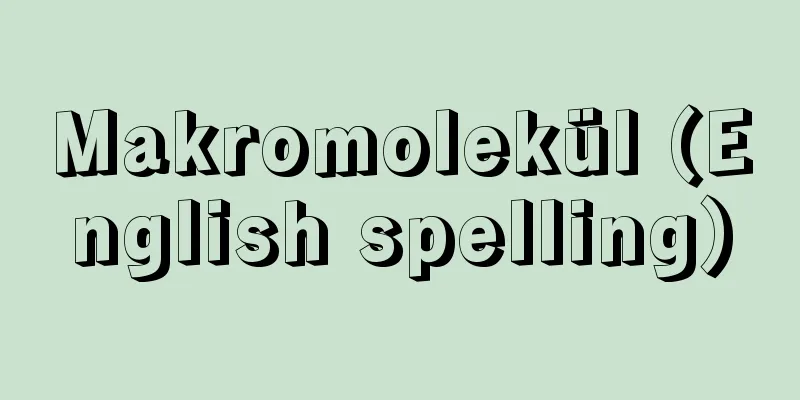Motor nerves - Sports nerves

|
Peripheral nerves originate from the brainstem and spinal cord and go to skeletal muscles, regulating bodily movements; they are the opposite of sensory nerves, which go from the sensory organs to the brain. From the brainstem come the oculomotor nerve, trochlear nerve, and abducens nerve, which go to the eye muscles, the hypoglossal nerve, which goes to the tongue muscles, and the accessory nerve, which goes to the muscles of the neck and shoulders. In addition, there are nerves that go from the anterior horn cells of the spinal cord to the muscles of the limbs and trunk. In addition to skeletal muscles, the nerves that control cardiac and smooth muscles belong to the autonomic nervous system, but they have the properties of motor nerves, as they are called vasomotor nerves. Human motor nerves have nerve fibers with a thickness of 10 to 20 micrometers and 3 to 6 micrometers. The former are called alpha fibers, and the latter are called gamma fibers. The alpha fibers contract the muscles and perform tasks such as lifting objects, while the gamma fibers regulate the sensitivity of receptors called muscle spindles, which detect the degree of muscle contraction. For example, if the alpha fibers that go to the muscles of the legs are damaged, the muscles become paralyzed and the person cannot stand, but if the gamma fibers are damaged, the muscles will contract, but the degree of contraction cannot be determined, so even if the person can stand, they will wobble and eventually fall down. Also, one motor nerve fiber branches out at the end and controls several muscle fibers. There is a rule that one motor nerve controls more than 100 muscle fibers in areas that require great muscle strength, such as the muscles of the limbs, but controls only a few muscle fibers in areas that require delicate movements, such as the muscles of the face and fingers. [Torii Shizuo] [Reference] |Source: Shogakukan Encyclopedia Nipponica About Encyclopedia Nipponica Information | Legend |
|
脳幹(のうかん)および脊髄(せきずい)から出て骨格筋にいき、身体運動の調節をつかさどる末梢(まっしょう)神経で、感覚器から脳にいく感覚神経の対語である。脳幹からは眼筋へいく動眼神経、滑車(かっしゃ)神経、外転神経、舌筋にいく舌下神経、首や肩の筋へいく副神経が出ている。また脊髄の前角細胞からは四肢や躯幹(くかん)の筋にいくものがある。骨格筋のほかに心筋や平滑筋を支配する神経は自律神経系に属しているが、血管運動神経などとよばれているように運動神経の性質をもっている。 ヒトの運動神経には、神経線維の太さが、10~20マイクロメートルのものと、3~6マイクロメートルのものがあり、前者の太いほうをα(アルファ)線維、後者の細いほうをγ(ガンマ)線維とよぶ。α線維は筋肉を収縮させ、物を持ち上げるなどの仕事をする働きをもっているが、γ線維は筋収縮の程度を感知する筋紡錘という受容器の感度を調節する働きをもっている。たとえば、足の筋肉へいくα線維が損傷すると、筋肉が麻痺(まひ)して立てなくなるが、γ線維の損傷では筋肉は収縮するが、その程度がわからないので、立つことはできても、ぐらぐら揺れて結局は倒れてしまう。また1本の運動神経線維は、末端にいって枝分れをして、いくつかの筋線維を支配している。四肢の筋肉のように大きな筋力を必要とするところでは、1本の運動神経が100本以上の筋線維を支配しているが、顔や指の筋肉のような繊細な運動を要求されるところでは、わずか数本の筋線維を支配しているという法則がある。 [鳥居鎮夫] [参照項目] |出典 小学館 日本大百科全書(ニッポニカ)日本大百科全書(ニッポニカ)について 情報 | 凡例 |
Recommend
Freshwater algae - Tansui-sou
A term for seaweed. In addition to algae that gro...
Kazuno [city] - Kazuno
A city in northeastern Akita Prefecture. In 1972, ...
Vasiliy Pavlovich Aksyonov
Russian (Soviet) writer. Born in Kazan. Graduated...
Guest God - Kadokyakyakujin
...In the auxiliary shrines, deities with close t...
Glaukos (English spelling)
The name of a god or hero who often appears in Gr...
Campagnola, G.
…There are engravings and etchings. Giulio Campag...
Koine (English spelling)
Koine means "common language" in Greek, ...
SDI - Strategic Defense Initiative
Strategic Defense Initiative (SDI) or Star Wars. P...
Sankanogoi (Yamaga Goi) - Sankanogoi (English spelling) bittern
A bird of the Heronidae family in the order Ciconi...
Misugi [village] - Misugi
A village in Ichishi District, central west of Mie...
General Certificate of Education
...Today, the pass rate for the baccalauréat is 7...
Leo [XIII] - Leo
Pope of the Roman Catholic Church (reigned 1878-19...
Koen - Koen
A Buddhist sculptor in the mid-Kamakura period. A...
Inspection - Kenchu
Land surveys in the Middle Ages. This refers not ...
Equestrian
The art of riding and controlling a horse. Origin...









